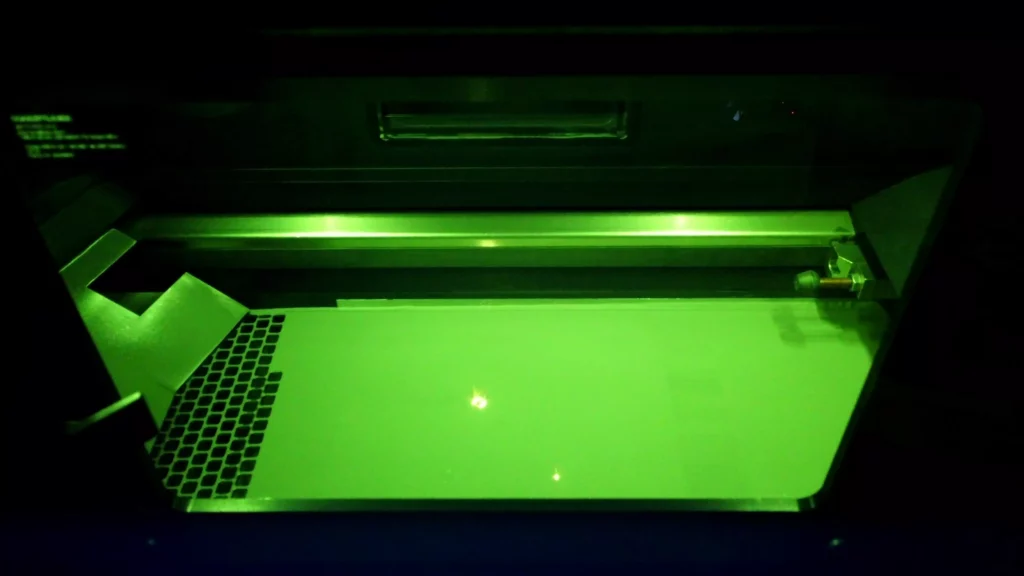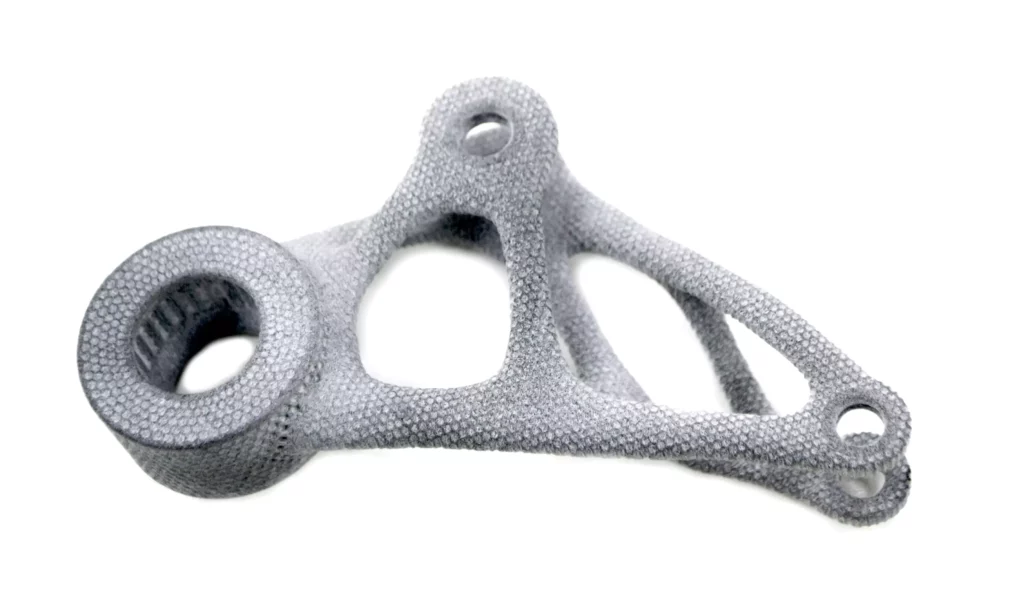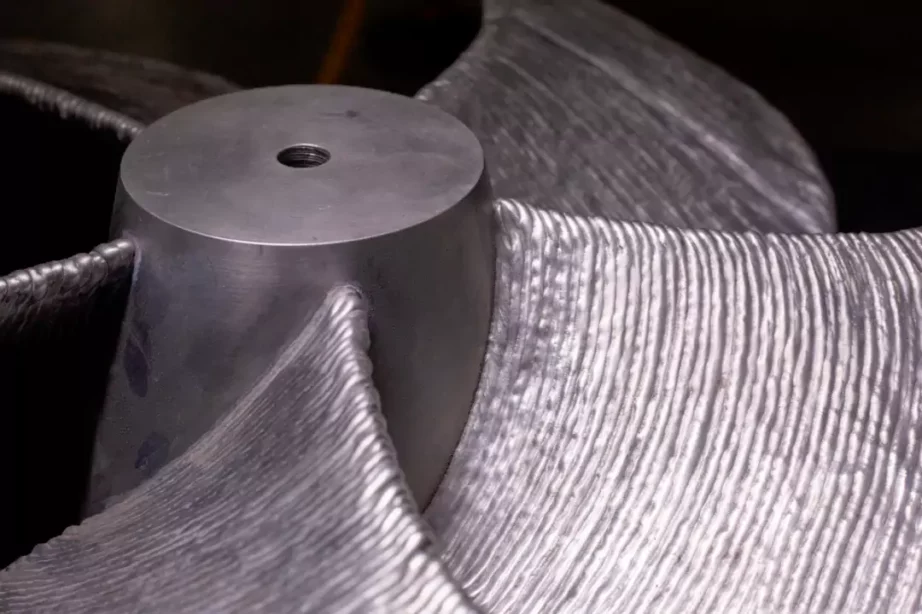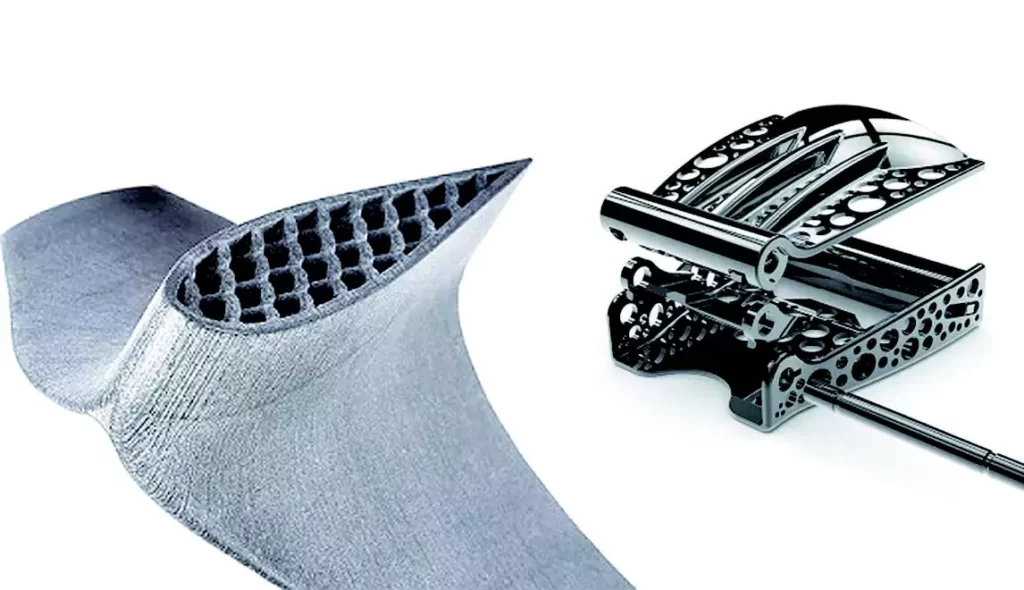Metal 3D Printing: How Does it Work
Traditional metal fabrication processes are highly energy-intensive and generate substantial waste, with up to 90% of the metal being cut away during manufacturing. This not only consumes excessive energy but also adds unnecessary weight to the final product, which is a costly disadvantage in industries like aviation. Metal 3D printing shows us different ways of doing it.
In contrast, 3D printing minimizes waste by using only the precise amount of material required, resulting in virtually no waste. The limitations of plastic-only printing have been overcome as companies worldwide are developing 3D printers capable of printing with metal materials. This breakthrough opens up new possibilities for the direct production of complex metal objects using 3D printing technology.
What is Metal 3D Printing
Metal 3D printing, also known as metal additive manufacturing, is a cutting-edge manufacturing technology that enables the creation of three-dimensional metal objects. It utilizes additive processes to build up metal parts layer by layer, unlike traditional subtractive methods that involve cutting, machining, or casting. (Please see this post: 3D Printing vs CNC Machining)
Metal 3D printing involves the use of specialized 3D printers that are equipped with lasers or electron beams to selectively melt or sinter metal powders, fusing them together to form complex shapes and structures. This technology allows for the production of highly intricate and customized metal components that may be challenging or impossible to create using conventional manufacturing methods.
Metal 3D printing introduces exciting possibilities and applications, particularly in the transportation industry. It enables the implementation of lightweight engineering and design techniques, which play a crucial role in various objectives. These objectives include reducing overall vehicle weight, optimizing energy efficiency during operation, lowering manufacturing costs, and enhancing overall performance. This technology opens up new avenues for innovation and advancement within the transportation sector.
Metal 3D Printing Process
The metal 3D printing process, also known as metal additive manufacturing, involves several key steps:
Designing the Object
The process begins with creating a digital design of the desired object using computer-aided design (CAD) software. The design can be customized and optimized for the specific requirements and capabilities of metal 3D printing.
Preparing the CAD File
The CAD design is then converted into a format compatible with the metal 3D printer. This may involve slicing the 3D model into thin cross-sectional layers, determining the appropriate support structures, and specifying printing parameters.
Material Selection
The choice of metal powder material is critical in metal 3D printing. Various metals, such as titanium, aluminum, stainless steel, and nickel alloys, can be used based on the specific application and desired properties of the printed object.
Preparing the Printer
The metal 3D printer is set up and calibrated according to the specifications of the metal material being used. This includes ensuring the correct temperature, gas atmosphere, and other process parameters required for successful printing.
Printing the Object
The metal 3D printer starts the additive manufacturing process by depositing a thin layer of metal powder onto the build platform. The powder layer is then selectively melted or sintered using a high-energy source, such as a laser or electron beam, based on the instructions provided by the CAD file. This process is repeated layer by layer until the complete object is formed.
Post-Processing
After printing, the metal object may undergo various post-processing steps to improve its mechanical properties, surface finish, and dimensional accuracy. This can include removing support structures, heat treatment, machining, polishing, or applying additional coatings or finishes.
How Does it Work?
Unlike conventional printers that melt plastic and deposit it, metal printing requires different approaches due to the very high processing temperature and the melting point of metals. Three widely used techniques have emerged in the field of metal printing. One of these techniques is known as binder jetting, which offers significant material efficiency advantages over other metal printing methods, exceeding them by more than ten times.
Binder Jetting
The process of Binder Jetting is very like the MIM process. Binding materials are used to bind the metal powder so the metal powder could form the shape designed.
In the binder jetting print process, the following steps are involved:
Chamber Preparation
The build chamber is filled with inert gas, such as argon, to prevent oxidation of the metal during printing.
Metal Powder Deposition
A thin layer of metal powder, typically 20 to 50 microns thick, is evenly spread in the build chamber. The layer thickness depends on factors like the flow properties, particle size, and shape of the metal particles.
Polymer Binder Application
A polymer compound, acting as a binder, is sprayed onto specific regions of the metal powder layer according to the 3D outline of the component being printed. This binder helps in binding the metal particles together. So that only the metal powders in the 3D outline are bonded, the metal powders that are not in the 3D outline will be removed in the step follows.
Layer-by-Layer Building
The process is repeated, with additional layers of metal powder and binder applied on top of each other, gradually building the object. Each layer corresponds to a cross-section of the 3D model.
Excess Powder Collection and Reutilization
After printing, the excess metal powder is collected, filtered, and refreshed with unused metal powder particles. This recycled powder can be reused in subsequent prints, reducing material waste.
Component Separation and Post-Processing
The printed component is separated from the build chamber using various techniques, such as mechanical or chemical means. Post-processing steps, such as removing support structures or applying finishing treatments, may be performed as required.
Accuracy
The printed component typically achieves a high level of accuracy, typically within ±0.1 mm, depending on the specific printer’s capabilities and the complexity of the design.
After the completion of the build process and separation of manufacturing metal parts from the build plate, it is considered a “green” 3D-printed metal object. However, this green object exhibits poor mechanical strength and high porosity. To address these limitations, two common approaches are employed:
Sintering
The green object is placed in a furnace equipped with conventional heating elements and microwave technology. The temperature is raised to a level just below the melting point of the metal (but significantly above the melting point of the polymer binder). As the temperature increases, the polymer binder ignites and burns away. The intense heat facilitates a process called “sintering,” where the metal particles are bonded together, filling the microscopic holes and voids. This sintering process results in approximately 97% pore filling, enhancing the object’s mechanical properties.
Infiltration
In this method, the green object is subjected to a furnace to eliminate the remaining polymer binder, which leaves approximately 60% voids in the structure. To strengthen and reduce porosity further, the object is then infiltrated with a bronze material. The bronze fills the voids generated from the removal of the polymer binder, resulting in increased strength and a significant reduction (approximately 90%) in pore volume.
Shrinkage is a concern in binder jetting 3D metal printing, especially during the sintering or infiltration stages in the furnace. High temperatures can cause dimensional inaccuracies, warping, or deformation due to metal softening. Skilled machine operation and careful consideration in the initial design stage are employed to compensate for potential shrinkage and ensure the final product’s desired dimensional accuracy and shape.
Selective Laser Melting
It is another prominent technique used in metal 3D printing, and it differs from binder jetting. Selective laser here means the laser will pass through selected paths and positions.

Here is an overview of the SLM process:
Chamber Preparation
The build chamber is filled with an inert gas to create an oxygen-free environment that prevents oxidation of the metal during the printing process.
Metal Powder Deposition
A thin layer of metal powder is uniformly spread across the build platform.
Laser Fusion
A high-powered laser scans and selectively melts the metal powder in the cross-sectional area of the object, fusing the particles together to create a solid layer of the object. The laser is precisely controlled based on the digital design.
Layer-by-Layer Building
After the completion of one layer, the build platform moves downwards by a specified distance, typically ranging from 50 to 200 microns. A re-coater then spreads a fresh layer of metal powder on top of the previous layer.
Laser Scanning and Fusion
The laser scans and melts the metal powder in the newly deposited layer, fusing it with the underlying layer.
Repeat and Build Up
The process is repeated, layer by layer, with the build platform descending and a new layer of powder being spread and selectively melted until the entire object is built up.
Excess Powder Collection and Reuse
After printing, the excess metal powder is collected, filtered, and mixed with fresh powder for reuse in subsequent prints. This recycling process helps minimize material waste.
Selective laser melting allows for the creation of complex geometries and high-resolution parts with excellent mechanical properties. It is widely used in industries such as aerospace, medical, and automotive for producing functional metal components with precise dimensions and fine detail.
Selective laser melting (SLM) eliminates the need for separate heating and sintering processes because it directly melts the metal powder to form the object. This unique characteristic results in a final product with significantly higher mechanical strength. As a result, SLM is the preferred method for manufacturing components that require exceptional mechanical properties such as metal fatigue resistance, elongation at break, and elastic modulus.

Both the binder jetting and SLM techniques prioritize material efficiency. The metal powder used in these processes is collected, filtered, and mixed with fresh powder for reuse. This recycling approach ensures that the waste generated is minimized to less than 5%, contributing to a more sustainable and cost-effective manufacturing process.
Wire Arc Additive Manufacturing
Wire Arc Additive Manufacturing (WAAM) is a manufacturing technique utilized for the production or repair of metal components. It falls under the category of Direct Energy Deposition (DED) processes within the realm of Additive Manufacturing. WAAM involves the sequential deposition of metal layers to gradually form a desired three-dimensional shape.
This method combines two manufacturing processes: Gas Metal Arc Welding (GMAW) and additive manufacturing. GMAW is an arc welding technique used for fusing metal parts together, while additive manufacturing refers to the industrial term for 3D printing. In WAAM, the production of parts is achieved by integrating a welding robot with a power source. The robot employs a welding torch to melt the wire feedstock, subsequently building the 3D components.
In WAAM, the metal wire is fed through a nozzle or welding torch, and the arc heat melts the wire, which is then deposited onto a substrate or previously deposited layers. The process continues layer by layer until the desired object is formed. The deposited layers solidify and bond together, creating a metal part. Obviously, the parts made from WAAM would have a rather rough surface, secondary operations such as grinding or polishing are needed to gain a better surface.

WAAM offers several advantages, including faster build rates compared to some other metal 3D printing techniques, lower material costs due to the use of wire instead of powder, and the ability to work with a wide range of metal alloys. It is often used for fabricating large-scale metal components such as airplane wings, ship propellers, or jet engine parts. The process has applications in industries such as aerospace, automotive, and maritime. It is very useful to produce large parts prototypes, the alternative manufacturing process would require expensive large equipment and waste a lot rather expensive material.

Conclusion
In conclusion, metal 3D printing has revolutionized the production of metal components. It offers numerous advantages over traditional manufacturing methods, including greater design freedom, reduced material waste, and the ability to create complex geometries. Metal 3D printing enables the production of lightweight structures, customized parts, and improved performance in various industries such as aerospace, automotive, healthcare, and more.
As metal 3D printing continues to advance, with ongoing research and development, it holds the potential to transform industries by enabling the production of highly customized, lightweight, and efficient metal parts. With its ability to reduce waste, improve performance, and increase design possibilities, metal 3D printing is poised to reshape the future of manufacturing.